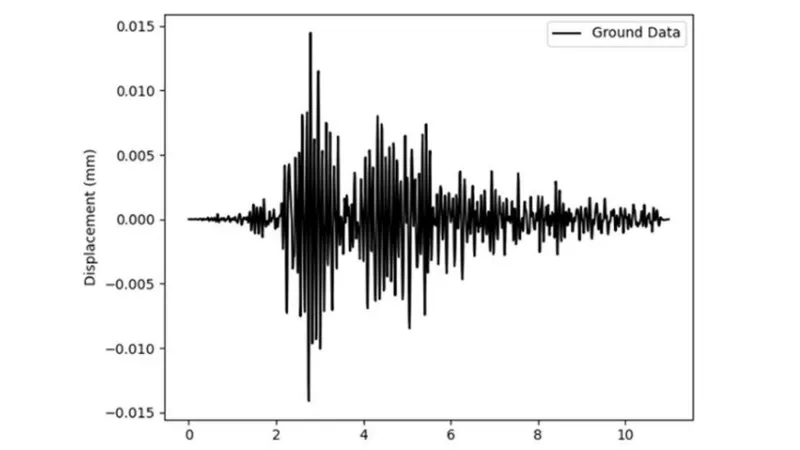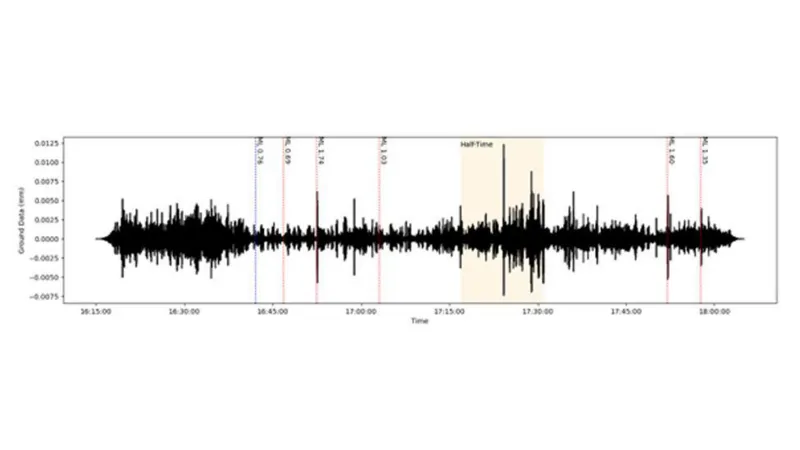Scientists from the University of Liverpool have revealed that celebrations by Liverpool fans during the club’s recent title-winning match against Tottenham Hotspur triggered measurable ground tremors.
The victory, which took place at Anfield on 27 April, saw Arne Slot’s team clinch Liverpool’s 20th top-flight league title with a commanding 5-1 win in front of a full-capacity crowd.
The most powerful tremor occurred when Alexis Mac Allister scored in the 24th minute, giving Liverpool a 2-1 lead. This moment registered a seismic reading of 1.74 on the Richter scale.
The tremors were captured by the university’s earth science team using seismic monitoring equipment typically used for detecting earthquakes.


Callum Harrison, a seismologist with the British Geological Survey, explained that the tremors recorded during the match were picked up by highly sensitive seismic instruments.
“These types of seismic signals have been detected at various major events in recent years, such as large-scale concerts and sporting occasions—including Taylor Swift’s performances last year,” he noted.
He clarified that while the vibrations produced can resemble those of minor earthquakes in magnitude, they are actually the result of collective crowd movement—such as jumping or dancing—rather than tectonic activity.
The research was carried out by Dr. Antoine Septier, Dr. Farnaz Kamranzad, and Professor Ben Edwards from the University’s Department of Earth, Ocean and Environmental Sciences, in collaboration with Liverpool Football Club.
Commenting on the findings, Professor Edwards remarked, “Just like natural seismic events, these goals led to noticeable ground vibrations—driven purely by the energy and excitement of Liverpool supporters.”
He added, “The fans’ passion was quite literally strong enough to shake the ground.”

Analysis of the data showed that the 60,415 fans packed into Anfield created genuine seismic vibrations, especially during moments when goals were scored.
The second most intense tremor, registering a magnitude of 1.60, occurred after Mo Salah’s goal in front of the iconic Kop end during the second half.
Other goal-related tremors included a 1.03 reading for Cody Gakpo’s strike, a 1.35 magnitude following Destiny Udogie’s own goal, and a 0.64 magnitude tremor resulting from Luis Díaz’s initially disallowed equaliser.

Dr. Farnaz Kamranzad explained that although the tremors generated during the match were too subtle to be physically felt by fans in the stadium, they were still strong enough to leave a distinct and lasting seismic signature at Anfield.
“Each roar of the crowd and every moment of celebration creates a seismic trace beneath us—a kind of joyful imprint in the Earth that endures well beyond the final whistle,” she remarked.
Dr. Antoine Septier expressed hope that the findings from this study might encourage young people to take an interest in seismology.
“By showcasing this data, we aim to inspire fresh, creative thinking about how such information could be used—possibly even to enhance the stadium experience in the future,” he added.
For more trending news visit share4all.cc



















